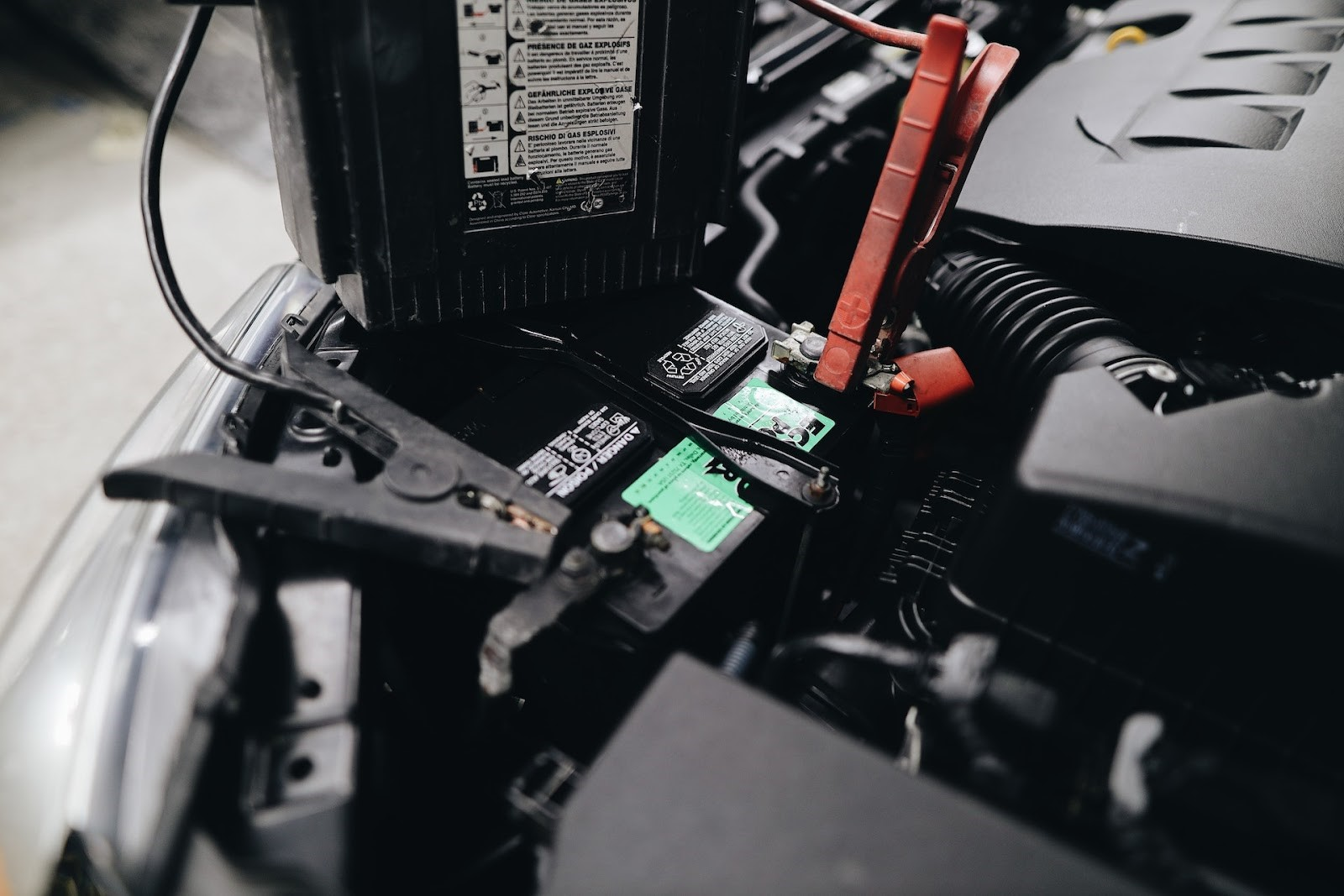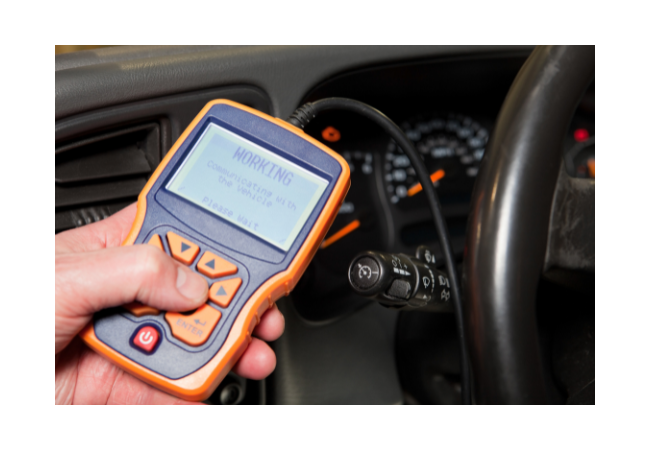Picture this: You’re cruising down the road when suddenly, your ABS light turns on. Alarm bells start ringing in your head – what’s wrong with your vehicle? Is it safe to continue driving? Worry no more! In this blog post, we’ll guide you through the process of how to reset ABS light without scan tool and provide valuable information on the ABS system itself. By the end, you’ll have a better understanding of this crucial safety feature and the confidence to tackle anti-lock braking system light issues head-on.
Contents
- 1 Key Takeaways
- 2 Understanding the ABS Light
- 3 Common Causes of ABS Light Activation
- 4 Resetting the ABS Light Without a Scan Tool: Step-by-Step Guide
- 5 Troubleshooting Persistent ABS Light Problems
- 6 Preventative Measures for ABS Light Issues
- 7 Summary – How to Reset ABS Light Without Scan Tool
- 8 Frequently Asked Questions
Key Takeaways
- Understanding the ABS light and its role in providing enhanced steering control & safety
- Common causes of ABS light activation, including faulty wheel speed sensors, low brake fluid levels & damaged components
- Steps to resetting the ABS Light without a scan tool as well as preventative measures for avoiding issues
Understanding the ABS Light

The ABS system light, also known as the anti-lock braking system light, is a front dashboard warning light indicator that alerts drivers to potential issues with the anti-lock braking system (ABS). This safety feature is designed to prevent wheel lockup during sudden braking, allowing you to maintain steering control and improve overall braking performance.
An illuminated ABS light could indicate problems with the ABS sensor, ABS control module, or stored fault codes in the system. Furthermore, a flashing ABS light signals a more serious issue that requires immediate attention.
The role of the ABS system
Preventing wheel lockup during braking while preserving steering control is the primary function of the ABS system. This is achieved through a series of wheel speed sensors that monitor the rotational speed of each wheel and adjust brake pressure accordingly.
When the ABS system is activated, you may feel the brake pedal pulsate or vibrate as the ABS pump and system cycle the brakes intermittently. In emergency braking situations or on slippery surfaces, this sophisticated system significantly contributes to your vehicle’s safety and performance.
Importance of addressing ABS light issues
Addressing ABS light issues in a timely manner is of great importance for vehicle safety and performance. Ignoring the warning lights and signs could lead to loss of control during braking, particularly on slippery surfaces or during sudden stops. Driving with the ABS sensor unplugged is not only dangerous but is also considered illegal in certain jurisdictions.
Rather than merely resetting the light, which provides only a temporary solution, it’s crucial to identify and resolve the root cause of the faulty anti-lock braking system module and light activation.
Common Causes of ABS Light Activation
Identifying and resolving any underlying issues can be aided by understanding the common causes of ABS light activation. The most frequent reasons for the ABS light turning on include a faulty wheel speed sensor, low brake fluid levels, and damaged ABS components.
Faulty wheel speed sensors are responsible for monitoring wheel speed and transmitting the information to the ABS system, thus causing the ABS light to activate. Low brake fluid levels can also trigger the ABS light, as the system requires an adequate amount of brake fluid to function properly.
Faulty wheel speed sensors
Wheel speed sensors, or vehicle speed sensors (VSS), are located in the hub assembly of the front wheels and detect the rotational speed of each wheel. These sensors transmit the information to the vehicle’s control system, such as the anti-lock braking system or engine control unit (ECU), which then applies the data to ensure the correct functioning of safety systems like ABS and traction control.
The ABS light can be triggered by damaged or malfunctioning wheel speed sensors that send incorrect signals to the ABS braking system. Activation of the ABS light, diminished braking performance, and wheel lockup could indicate a malfunctioning wheel speed sensor.
Low brake fluid levels
A decrease in brake fluid levels can activate the ABS light, as the system requires a specific amount of fluid pressure to operate effectively. Low brake fluid levels may be due to leaks or worn brake pads and could potentially result in the ABS system malfunctioning and activating the ABS light.
Driving with insufficient brake fluid levels can lead to diminished braking capability and raise the potential for collisions.
Damaged ABS components
Damaged ABS components, such as the control module, solenoid valves, or hydraulic pumps, may trigger the ABS light to be illuminated. These issues can impede the proper functioning of the ABS system, ultimately compromising the safety and performance of your vehicle.
When the magnetic ring within the wheel speed sensor becomes brittle and weak, it starts to disintegrate, causing the sensor to register an inaccurate reading and activate the ABS light.
Resetting the ABS Light Without a Scan Tool: Step-by-Step Guide
If you’re looking to reset ABS light without the help of a scan tool, this step-by-step guide is for you. While a scan tool can certainly make the process easier, it’s not a requirement for resetting the ABS light.
Following the steps outlined below will enable you to manually reset the ABS light and potentially resolve any underlying issues. If the ABS light persists after trying to reset ABS light manually, consider seeking professional help or investing in a diagnostic tool.
Disconnecting the battery

Disconnecting the battery is the first step in resetting the ABS light without a scan tool. To do this, follow these steps:
- Turn off the engine.
- Locate the battery, which is typically situated in the engine compartment.
- Disconnect the negative terminal first.
- Disconnect the positive terminal for safety purposes.
Wait a few minutes after disconnecting the battery to allow any stored energy to dissipate.
Checking and replacing ABS fuse
Inspecting and replacing any blown ABS fuses in the fuse box that may be causing the ABS light to remain on is the next step. The fuse panel is typically located in two places. Under the dashboard or in the engine compartment. Refer to your vehicle’s manual to identify the precise location of the ABS fuse.
Using a fuse puller or a pair of needle-nose pliers, delicately grip the ABS fuse and pull it out of its socket. Make sure to handle it with care to avoid any damage. Replace the blown fuse with one of the same rating.
Inspecting and repairing wheel speed sensors
The final step involves examining the wheel speed sensors for any signs of damage or corrosion. To confirm the sensor is operating correctly, check the sensor for heavily coated corrosion and dents, and ensure all electrical wiring is secure and free of stress.
If you discover a faulty wheel speed sensor, it’s crucial to replace it to ensure the proper functioning of the ABS system.
Troubleshooting Persistent ABS Light Problems
Should the ABS light remain illuminated after attempting a manual reset, considering other options is advisable. Typical causes of ongoing ABS light issues include:
- A malfunctioning ABS module
- Fluid reservoir levels that are too low
- Broken wheel speed sensors
- Blown fuses
Seeking professional assistance or investing in a diagnostic tool to accurately identify and address the issue is recommended in such cases.
Seeking professional assistance
Consulting a mechanic or automotive technician for further diagnosis and repair is a wise decision if you’re unable to resolve the ABS light issue on your own. The advantage of seeking professional help from repair shop is that they have access to specialized equipment and expertise, ensuring the task is completed accurately and efficiently.
A professional mechanic or automotive technician can also provide guidance on how to avoid future ABS light issues. When seeking a reliable mechanic, assess their credentials, examine customer reviews, and ask for recommendations from acquaintances.
Investing in a diagnostic tool
Purchasing a diagnostic tool is another viable option for accurately identifying and addressing ABS light issues. When investing in a diagnostic tool, consider factors such as the specific requirements of your vehicle and the features and capabilities of available options. Additionally, compare prices and reviews to ensure you’re making an informed decision.
Owning a diagnostic tool can save you time and money in the long run, as it allows you to identify and repair issues without relying solely on professional assistance.
Preventative Measures for ABS Light Issues

Taking preventative measures can help minimize the likelihood of encountering ABS light problems in the future. Some recommended actions to prevent ABS light issues include regular maintenance, inspecting ABS sensors and rings, and avoiding steep driving terrain.
By being proactive about your vehicle’s health, you can ensure that your ABS system functions properly and avoid any potential hazards associated with ABS light activation.
Regular maintenance
Preventing ABS light issues is more likely with adherence to a regular vehicle maintenance schedule. This includes checking and replacing brake fluid, inspecting brake pads and rotors, and evaluating the ABS system for any signs of damage or wear.
Regular maintenance not only helps prevent ABS-related problems but also contributes to the overall safety and performance of your vehicle.
Monitoring tire pressure
Another key factor in preventing ABS light activation due to wheel speed sensor signal discrepancies is maintaining proper tire pressure. Tire pressure can be monitored using a tire pressure monitoring system (TPMS), which utilizes pressure monitoring sensors within each tire to accurately measure the pressure levels in real time.
By keeping your tires properly inflated, you can improve vehicle performance, enhance fuel efficiency, and minimize the risk of ABS light activation.
Summary – How to Reset ABS Light Without Scan Tool
In conclusion, understanding the ABS light and its underlying causes is essential for maintaining vehicle safety and performance. By following the steps outlined in this blog post, you can reset the ABS light without a scan tool and address any potential issues. If you’re unable to resolve the problem on your own, seeking professional help or investing in a diagnostic scanning tool can provide the assistance you need. Remember, being proactive about your vehicle’s maintenance and monitoring tire pressure will help minimize the likelihood of encountering ABS light issues in the future.
Frequently Asked Questions
Can I clear an ABS light without a scanner?
Disconnecting the battery and pressing the brake pedal can help reset error codes on the car’s computer, potentially clearing an ABS light without a scanner.
Can AutoZone scan for ABS light?
Yes, AutoZone can scan for ABS light with Fix Finder, which takes less than a minute and provides a comprehensive report.
Will pulling ABS fuse turn off the light?
Removing the ABS fuse will not turn off the indicator light on your dashboard; it will remain lit, even with the system inactive.
Can a fuse cause ABS light to come on?
Yes, a blown fuse can cause an ABS light to come on. It can be due to a malfunction in the vehicle’s braking system, such as damaged wires connecting the speed sensor and controller, or simply because fuses are prone to blow up.
ABS lights are a common problem, and it’s important to diagnose the issue correctly. If the fuse is the cause, it’s a relatively easy fix.
Abs light is on?
It’s likely that the ABS light coming on is due to either a malfunctioning ABS module, low levels in the fluid reservoir, broken wheel speed sensors, or the system being turned off.
Checking these components should help diagnose the issue and get your ABS back in working order.
